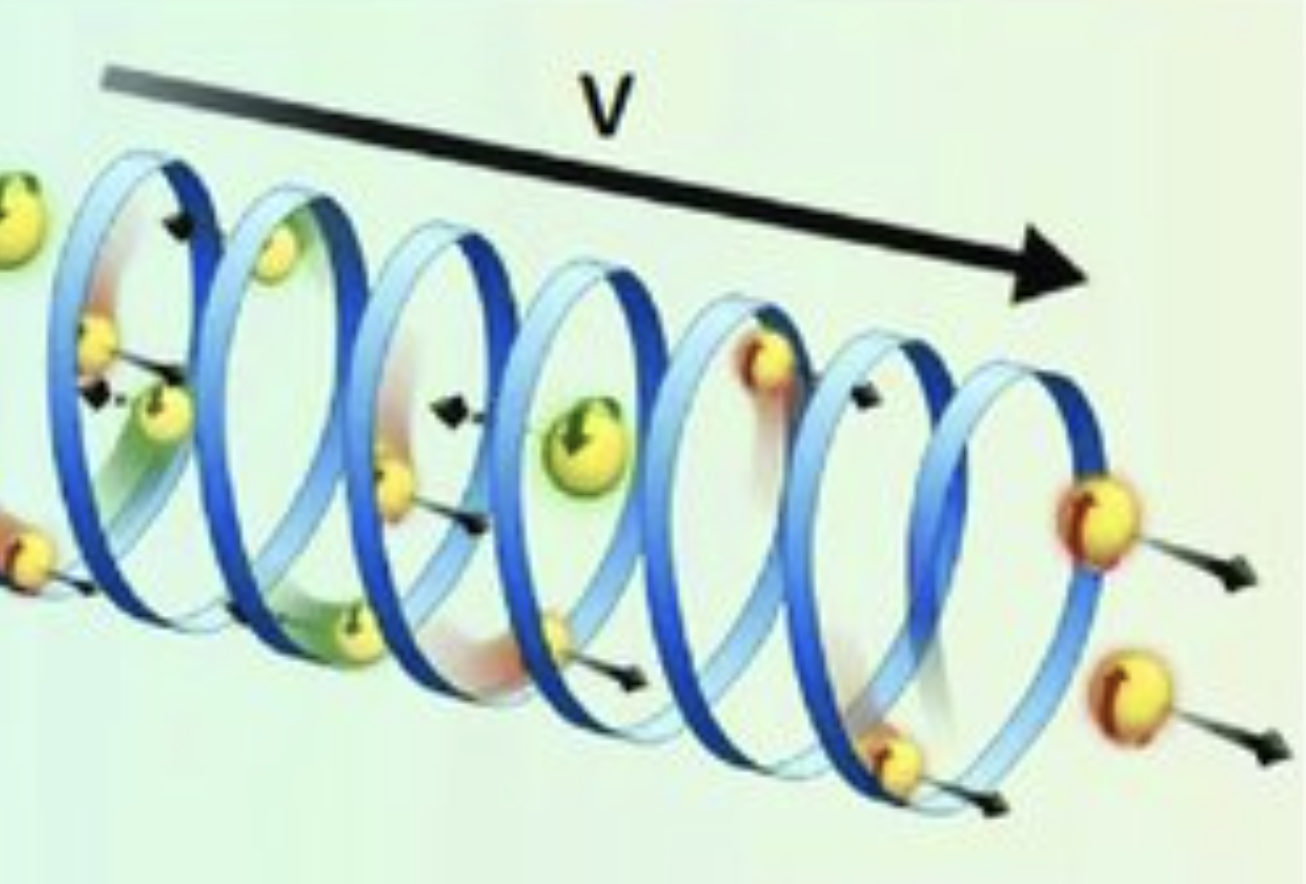

| Funding period: | Jan. 1, 2021 to June 30, 2024 |
| Agency: | DFG |
| Further details: | https://gepris.dfg.de/gepris/projekt/442940777 |
We acknowledge funding by the DFG project "Theoretical studies of chirality-induced spin selectivity" (CISS, grant agreement ID: CU 44/51-1, AOBJ: 668819)
Exploiting the spin degree of freedom to transfer information or perform logic operations builds the basis of spintronics. Currently, the majority of existing spintronic devices are based on inorganic materials. However, using organic molecules in spintronics, though very challenging, would offer many advantages such as the possibility for chemically tuning the spin-dependent response as well as their inexpensive synthesis in large amounts. For molecules lacking an intrinsic magnetic response, strong spin-dependent properties may not be expected. Surprisingly, it was shown experimentally a few years ago that monolayers of double-stranded DNA (dsDNA) oligomers can act as strong spin filters. A very suggestive hypothesis has been proposed that spin selectivity is closely related to the helical symmetry of the molecules studied so far (dsDNA, bacteriorhodopsine, helical oligopeptides, helicene). In other words, it seems that the helical shape (besides the possible presence of chiral centers) is largely responsible for the observed phenomenon. These results can have profound implications not only for the design of novel, organic or bio-inspired spintronic devices but also shed new light on electron transfer in biologically relevant molecules. This novel phenomenon has been called Chirality-Induced Spin Selectivity (CISS) effect. In this proposal we are aiming at theoretically exploring the CISS effect from various perspectives with the goal of shedding additional light on its basis. The reference point will be molecular systems displaying helical symmetry so that it will be possible to complement model-based studies with electronic structure investigations in realistic systems. This will help to reduce the arbitrariness in the choice of the relevant model parameters. We expect that the results obtained in the current proposal will not only be of fundamental interest in understanding the interplay between geometry and spin-dependent properties but also serve as a guide and motivation for further experimental studies.


| Funding period: | Jan. 1, 2021 to June 30, 2024 |
| Agency: | DFG |
| Further details: | https://gepris.dfg.de/gepris/projekt/442940777 |
We acknowledge funding by the DFG project "Theoretical studies of chirality-induced spin selectivity" (CISS, grant agreement ID: CU 44/51-1, AOBJ: 668819)
Exploiting the spin degree of freedom to transfer information or perform logic operations builds the basis of spintronics. Currently, the majority of existing spintronic devices are based on inorganic materials. However, using organic molecules in spintronics, though very challenging, would offer many advantages such as the possibility for chemically tuning the spin-dependent response as well as their inexpensive synthesis in large amounts. For molecules lacking an intrinsic magnetic response, strong spin-dependent properties may not be expected. Surprisingly, it was shown experimentally a few years ago that monolayers of double-stranded DNA (dsDNA) oligomers can act as strong spin filters. A very suggestive hypothesis has been proposed that spin selectivity is closely related to the helical symmetry of the molecules studied so far (dsDNA, bacteriorhodopsine, helical oligopeptides, helicene). In other words, it seems that the helical shape (besides the possible presence of chiral centers) is largely responsible for the observed phenomenon. These results can have profound implications not only for the design of novel, organic or bio-inspired spintronic devices but also shed new light on electron transfer in biologically relevant molecules. This novel phenomenon has been called Chirality-Induced Spin Selectivity (CISS) effect. In this proposal we are aiming at theoretically exploring the CISS effect from various perspectives with the goal of shedding additional light on its basis. The reference point will be molecular systems displaying helical symmetry so that it will be possible to complement model-based studies with electronic structure investigations in realistic systems. This will help to reduce the arbitrariness in the choice of the relevant model parameters. We expect that the results obtained in the current proposal will not only be of fundamental interest in understanding the interplay between geometry and spin-dependent properties but also serve as a guide and motivation for further experimental studies.